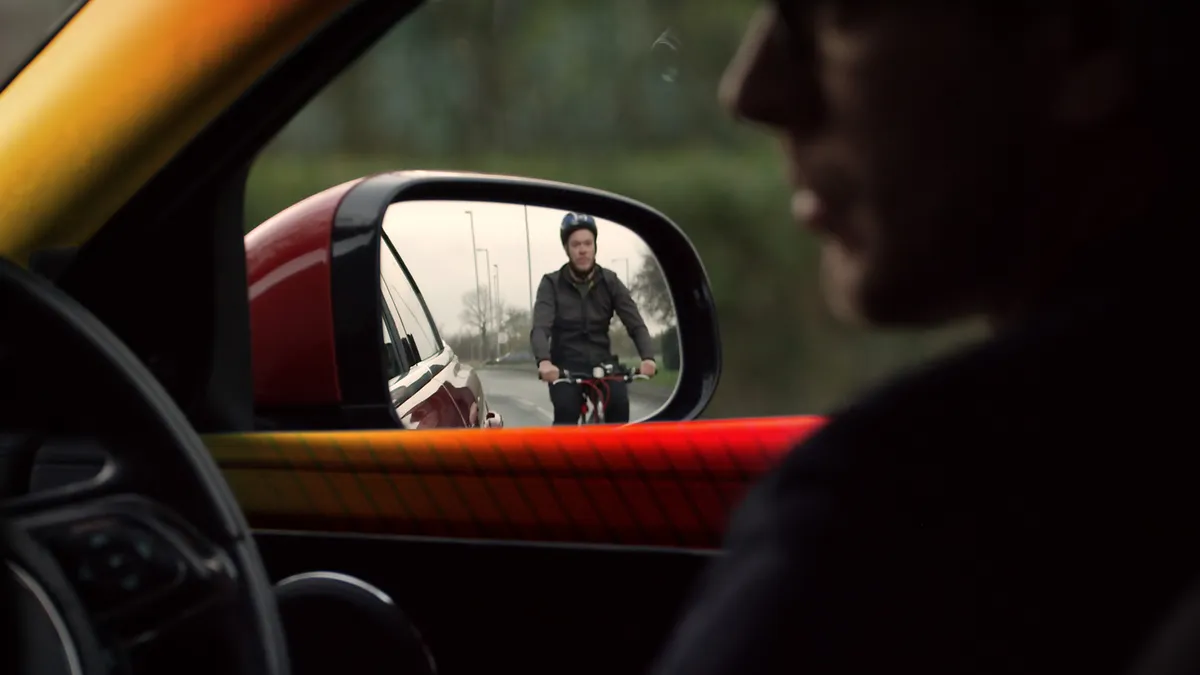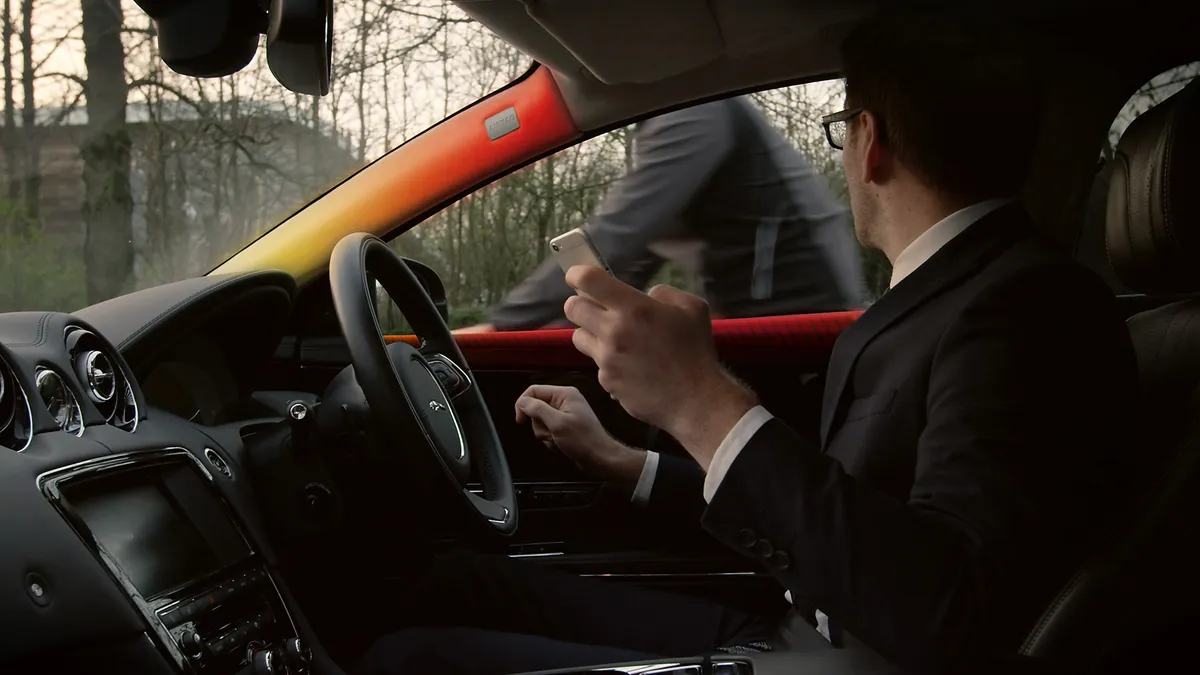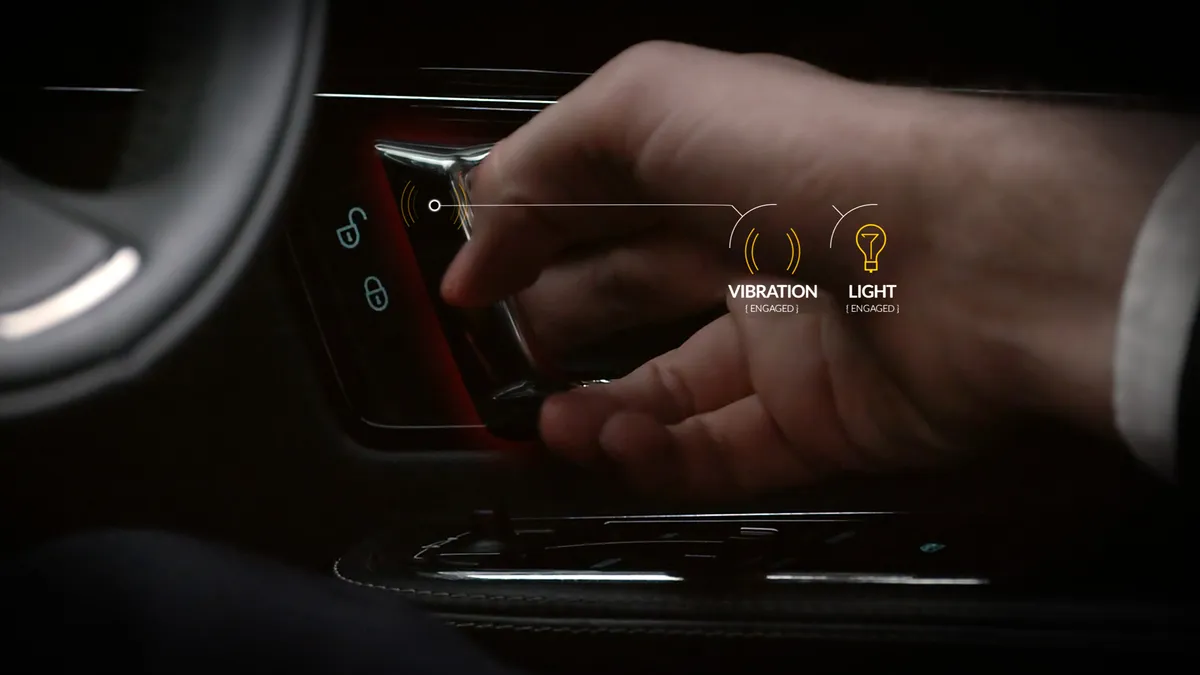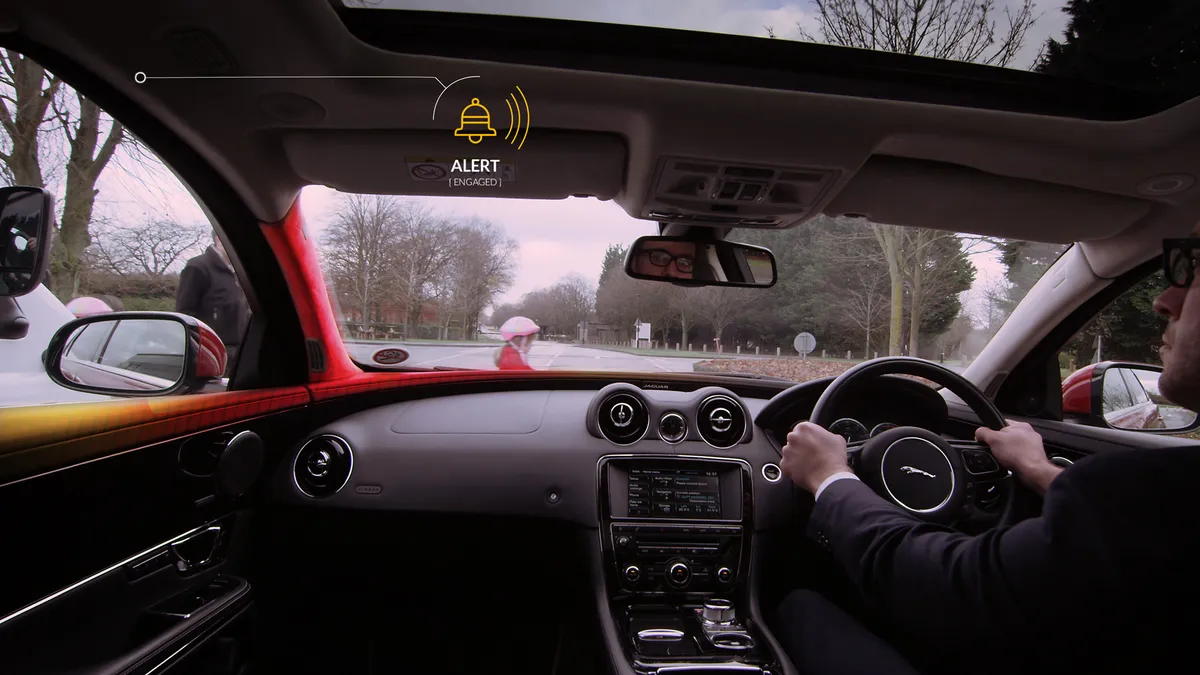Jaguar Land Rover is developing a range of new Bike Sense technologies designed to prevent cycling accidents by using lights, sounds and vibrations to alert drivers before they see cyclists.
Similar to the Volvo, POC and Ericsson real-time accident prevention system, Bike Sense uses clever detection technologies to make drivers aware of cyclists sharing the road. Sensors on the car will identify other road users and mark them as cyclists or motorbike riders, letting drivers know of the potential hazard.
Land Rover researchers are identifying the best warning colours and sounds that will trigger instinctive accident-preventing responses from drivers. A statement from the firm said: “Rather than using a generic warning icon or sound, which takes time for the driver’s brain to process, Bike Sense uses lights and sounds that the driver will instinctively associate with the potential danger.”
Such triggers include the audio system playing a bicycle bell sound though the speaker nearest to the cyclist, so the driver immediately understands from which direction the rider is coming.
If a bike approaches from the rear of the car, Bike Sense will detect which side of the car the cyclist is passing, the driver’s seat extending to tap the driver on whichever shoulder the pass is being made to alert them to the pass.
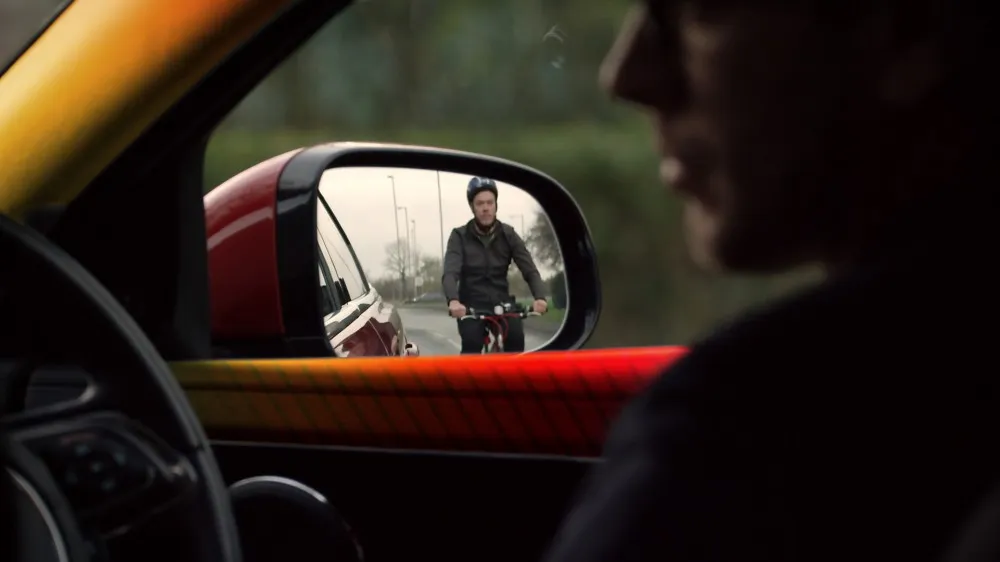
Lights around the car's interior will help make drivers aware of cyclists' movement and proximity
Bike Sense will also feature a matrix of LEDs on window sills, the dashboard and windscreen pillars that will glow amber and red as the bike approaches, the lighting also highlighting the cyclist’s movements.
Jaguar Land Rover's director of research and technology, Dr Wolfgang Epple, said: “Human beings have developed an instinctive awareness of danger over thousands of years. Certain colours, like red and yellow, will trigger an immediate response, while everyone recognises the sound of a bicycle bell.
“Bike Sense takes us beyond the current technologies of hazard indicators and icons in wing mirrors, to optimising the location of light, sound and touch to enhance this intuition. This creates warnings that allow a faster cognitive reaction as they engage the brain’s instinctive responses. If you see the dashboard glowing red in your peripheral vision, you will be drawn to it and understand straight away that another road user is approaching that part of your vehicle.”
If the driver ignores the warnings and presses the accelerator, Bike Sense will make the accelerator pedal vibrate or feel stiff, so the driver instinctively knows not to move the car forwards until the hazard has been avoided.
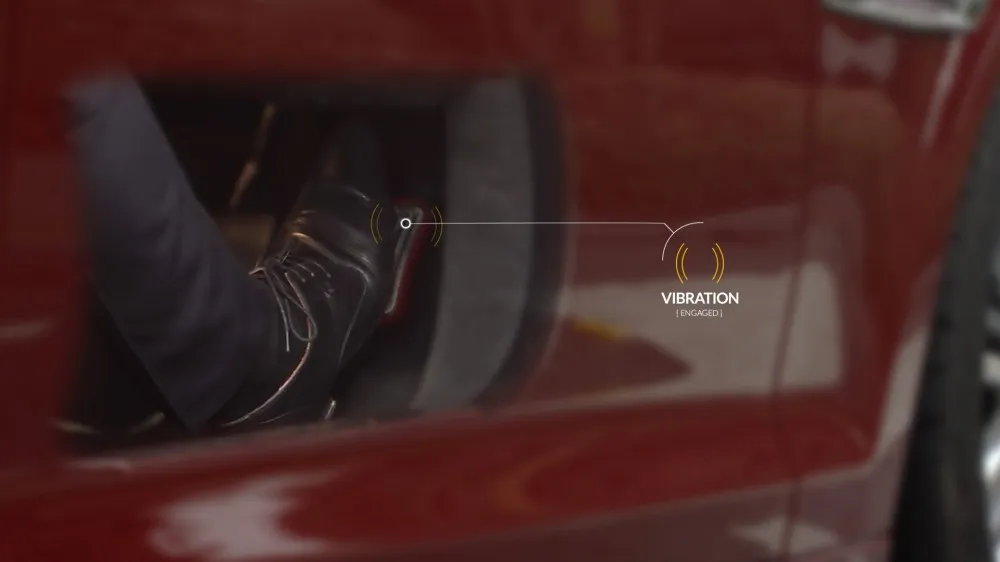
The accelerator pedal will vibrate should the driver ignore other prompts
Lights and sounds will also alert driver and passengers to hazards while stationary, door handles buzzing to prevent doors being opened into the path of oncoming cyclists.
“By engaging the instincts, Bike Sense has the potential to bridge the gap between the safety and hazard detection systems in the car and the driver and their passengers,” added Dr Epple. “This could reduce the risk of accidents with all road users by increasing the speed of response and ensuring the correct action is taken to prevent an accident happening.”
Would this encourage you to commute to work by bike? Come tell us in our forum where we're discussing the latest bike tech right now.

